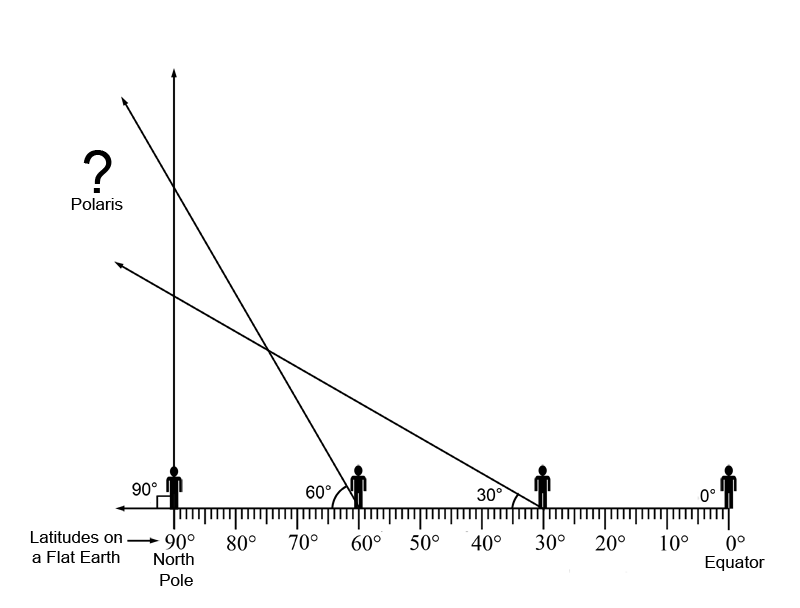Ok, so my last topic about distances got next to no responses on it, so I'm going to bring up another glaring issue with the Flat Earth theory.
So the star of Sadalmelik lies directly on the celestial equator and is a good marker for the equator. The Polaris star is directly above the north pole and thus is a good marker for that aswell.
These facts must be the same on the flat earth, meaning that Sadalmelik rotates directly above the equator and around the pole (somehow). The radius of this circle is 40 arc minutes.
So what would observers on different latitudes see? This does depend on how far away the stars are and unfortunately the flat earth theory does not know this.
What we do know is that someone on the North Pole would be able to see both Polaris and Sadalmelik above them, as would someone on the equator and every observer in between and south of the equator.
This is different to reality. in the September equinox, when Sadalmelik will be visible at night, an observer at the north pole couldn't see much as its too bright to see it.
So we must move down to 80° north. That person would see Polaris 10° from his zenith (point in the celestial sphere directly above him) Sadalmelik will be 10° from his horizon.
70° North will see Polaris 20° from his local zenith and Sadalmelik 20° above the horizon.
Skipping a bit, a observer on the equator will see Polaris on the horizon and Sadalmelik directly above them. It makes sense as a observers night sky consists of the 180° that they can see from horizon to horizon .
Polaris is ~434 light-years away and Sadalmelik is ~523 light-years away. The angle of elevation off Sadalmelik above the horizon is the same as the angle between their zenith and Polaris, or 90° - their latitude.
This makes sense on a spherical planet, but not a disc. Well, if Sadalmelik is above the equator and Polaris is above the pole, but we know that their angular separation is 90°.
If we place a observer at every 10° and use the same 90° - latitude,, we find that each time the star would be situated at different heights.

Thus, this presents us with a paradox that proves that the earth being flat is geometrically impossible. And don't even get me started on the southern hemisphere.

